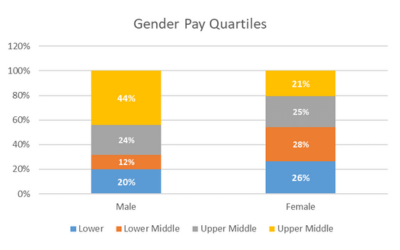Gender pay gap report
KIMS Hospital is committed to creating an environment which will attract, retain and motivate its people, by creating a working environment in which individuals are able to make best use of their skills, free from discrimination or harassment, and in which all decisions are based on merit. As an equal opportunities employer we are committed to the health and wellbeing of all our people.We are committed to ensuring that we operate a pay and reward scheme that is competitive, transparent and fair. We aim to ensure we eliminate discrimination and reward the skills, experience and potential of all our employees.
Gender Pay
The purpose of this report is to identify and explain any gaps that exist in the pay of women and men working at KIMS Hospital and how this may compare to benchmark data across similar organisations.
Our Industry
As with most health organisations, we employ more women than men. 80.8% of our population is female, which is broadly consistent with the Healthcare Industry in general (77% Female), 66.7% of our team leads and senior management team are female. Another theme, consistent with the healthcare industry as a whole, is the fact we do not receive many applications from male applicants for lower paid roles (e.g. healthcare assistants and support roles). We have an action plan in place to drive further male uptake in these roles..
We are committed to closing the gender pay gap. This report sets out the steps we have already taken to address this issue as well as longer term actions over the next 5 years.
Gender Pay Quartiles
The chart below illustrate the split of females across each of the four quartiles ranging from ‘Lower’ which is typically healthcare assistants and support staff, to Upper being members of senior management. Whilst we can see a reasonably even split from Lower to Upper Middle, the proportion of females is lower in the senior management positions.
As already explained, we typically receive much greater numbers of female applicants for housekeeping assistant, customer services administrators and ward clerks (lower quartile roles), and as a consequence, employ a majority of females in these roles.

Conversely, we employ a much smaller number of men in comparison to women. However, with the exception of Porters who are typically male, the majority of our male employees occupy management positions or are clinically trained and therefore earn a higher salary. This accounts for the apparent skew in gender pay in favour of the male upper quartile.
How can we improve our gender pay gap? Our commitment
Attraction
- As certain roles tend to attract certain genders, we will focus on adapting our recruitment advertising campaign to broaden appeal to both genders. We will be reviewing the language used in our adverts and the photography used improve appeal to all demographics.
Work life balance
- Our flexible working policy is open to all colleagues, we need to highlight and reinforce to our teams our flexible working policy as well as shared parental leave. We have identified the majority of our part time employees are female and therefore we need to raise awareness flexible working is available to both genders.
- Continue to promote our annualised hours and ‘bank’ work options.
Company Policies
- We regularly review our policies and look for opportunities to further support colleagues work life balance.
- We have implemented an Equality, Diversity and Inclusion Strategy and have champions across the business.
- We have in place a Menopause policy and have established Menopause champions across the hospital.
Training & Development
- Implement unconscious bias training to all team leaders to ensure our recruitment and hiring processes are free from bias.
- We have implemented Imposter training for female employees who wish to develop their career.
- We will continue to invest in our Leadership and Coaching culture to support and development our leaders within KIMS Hospital including a Women’s Leadership Development Programme.
- We continue to build on our apprenticeship pathways which will help encourage and promote internal progression.
- We are rolling out equality and diversity training led by industry experts to employees which raises the issues and challenges of gender and diversity.
Reward & Recognition
- Continue to develop our reward and recognition packages that attract the best people regardless of gender.
Review
- We monitor all Equality data at our monthly committee meetings and are starting to monitor gender pay. This data is also shared with the Hospital Board.